There are approximately three trillion trees in the world, according to density estimates of every continent except Antarctica, a number much larger than previous estimates of just over 400 billion trees. However their research also estimates that humans have cut down 46 per cent of the world’s trees since the beginning of human civilization. The […]
Tag: environment
A new “silent spring”
An editorial is calling the dumping of plastic waste into the ocean a new “silent spring”. “Silent spring” was a book written in the 1960s outlining the harmful effects of the overuse of pesticides on the environment. It was instrumental in raising public awareness of the potential dangers of pesticides. The authors of the paper […]
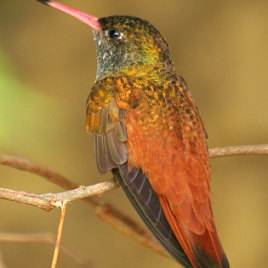
How hummingbirds drink: rethinking 50 years of research
High-speed videos have shown how hummingbirds feed on nectar, and it’s not what was previously thought. It’s not in the same way fluid rises in a capillary tube. Hummingbirds actually extract nectar by creating a tiny pump using the tongue. The new findings mean that fifty years of research studying how hummingbirds and floral nectar […]
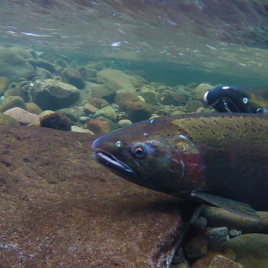
Wild salmon reproduce better than hatchery ones
Hatchery salmons are often introduced into rivers to support wild populations, which are in a state of decline. Yet hatchery males have lower reproductive success than wild ones, according to a study of 196 Coho salmons (Oncorhynchus kisutch). When occupying the same position in the spawning hierarchy, hatchery males have only 55 to 84 per […]
Wild salmon reproduce better than hatchery ones
Hatchery salmons are often introduced into rivers to support wild populations, which are in an overall state of decline, but new research suggests this may not be an effective method. A study of 196 Coho salmons (Oncorhynchus kisutch) shows hatchery males have lower reproductive success than wild ones. When occupying the same position in the […]
Measuring Arctic sea ice thickness
By measuring Arctic sea ice thickness, researchers are able to provide more accurate observations about Arctic ice melt. During the autumn of 2013 sea ice grew in thickness around Greenland by 33 per cent over the previous year’s measurement. The ice shrank in 2014, however it remained 25 per cent thicker than 2012 levels. The […]
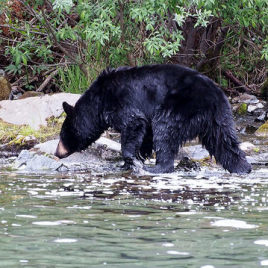
Female black bears eat berries, males eat ants
Male and female black bears do not share the same diet, according to new findings. A research using GPS telemetry and scat analyses found that black bears’ diet depends on their sex and, for females, on their reproductive status. In the same habitats, “females with cubs-of-the-year tended to…feed on bunchberry, whereas females with yearling foraged […]
Living near trees leaves people feeling healthier
A new study of 13,000 residents of Toronto, suggests that living in a neighbourhood with more (and or larger) trees leads people to report feeling healthier. The research team used Toronto tree density data and combined this information with a self-reporting questionnaire of general health perception and certain medical conditions including heart disease, stroke and […]
Comparing current and reduced carbon emissions shows benefit for the ocean 
Researchers compared the effects of two different carbon emissions trajectories and found that reducing emissions to levels required to meet the Copenhagen Accord shows benefits in many areas for the world’s oceans. The research team found that if carbon emissions are mitigated the oceans will be cooler and less acidic. However if carbon emissions maintain […]
Thirty-year recovery of mollusc communities after nuclear tests on a French Polynesian atoll
A 30-year study on a Pacific atoll used for nuclear testing shows that all reefs developed a community composition quite different from that before the tests as the result of random settlement of larvae from the open ocean. Fangataufa atoll located in south-central Pacific (French Polynesia) has been used as a nuclear testing site for […]
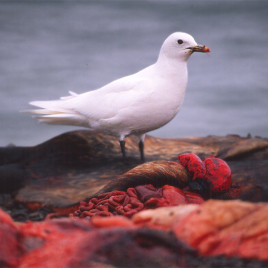
Mercury in endangered Ivory Gull feathers reach a 130-year record high
Ivory Gulls have declined by more than 80 per cent in Canada since the 1980s and have been listed as an endangered species in Canada since 2006. These gulls have the highest concentrations of mercury in their eggs of any Arctic bird, but the reason for their decline is not well understood. Researchers measured mercury […]
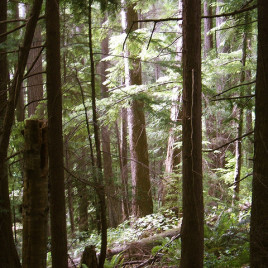
For a tree out west it’s all about the competition
A study of forests in Western Canada has revealed the forces shaping and changing the make up of a forest over time, are primarily competition among trees, with climate playing a secondary role. Researchers studied data collected between 1958 and 2009 in 1,680 forest plots from British Columbia to Manitoba. They found that competition […]
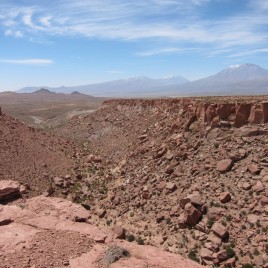
Wind-sculpted canyons
Winds could be responsible for the shape of some modern canyons on Earth and other planets such as Mars, according to a new study. Researchers analysed a set of river gorges in the Chilean Andes where some of the canyons are exposed to strong winds, and others are shielded. They found that wind explained differences […]
Human activity linked to blue-green algaes bloom in lakes since 1945
Human activity is the primary cause of blue-green algae bloom in lakes in Canada and across the world since 1945, a new study shows. Researchers have found that blooms of one type of harmful algae, called cyanobacteria or blue-green algae, have increased disproportionately over the past two centuries relative to other species, with the greatest […]
Volcanic metals hitch a ride on bubbles from Earth’s crust
During a volcanic eruption, massive amounts of sulphur are released into the earth’s atmosphere. Now a new study has looked at the source of the sulphur and its movement. The research focused on molten rock known as magma which exists deep within the Earth’s crust. This magma contains what is known as ‘sulphide melts’ – […]
Stopping high sea fishing to increase global catch
Closing the high seas to fishing could improve the distribution of catches globally, according to a new study. Researchers estimate that around 42% of commercial fish spend their time both in high seas and coastal areas, and predict that closure of high seas will result in more of these fish being caught in coastal areas […]
